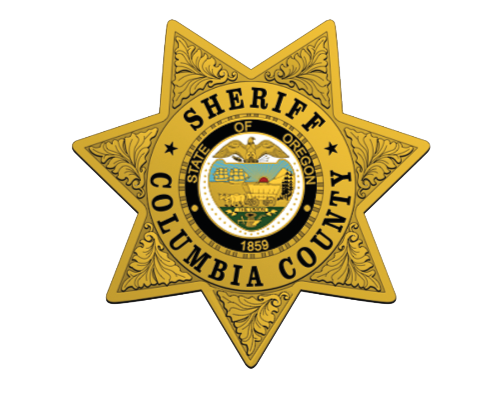Boating Laws
BOATING RULES & LAWS
Marine Patrols
- A boat approaching or being approached by a law enforcement vessel with a flashing blue light or siren must immediately slow and alter its course so as not to interfere with the operation of the law enforcement vessel. (OAR 250-011-0005(6))
- A peace officer may ask to stop any boat and direct it to a suitable pier or anchorage for boarding. No person shall knowingly flee or attempt to elude any law enforcement officer after having received a signal from a law enforcement officer to bring the boat to a stop. (ORS 830.035)
Operation
Operators must know the following rules governing boat operation:
Unsafe Operation (ORS 830.305)
- Operation that endangers or would likely endanger a person or property. Example of violation: Your boat wake causes a canoe to nearly capsize.
Reckless Operation (ORS 830.315(1))
- It is a crime to operate a boat carelessly in willful disregard of others. Example of violation: Pulling a skier through an area where swimmers are present in spite of the boat exclusion buoys.
Reckless Operation-Speed (ORS 830.315(2))
- A violation occurs if, due to a boat’s speed, it cannot be stopped by reasonable means in the clear distance ahead. Example of violation: Your boat runs over, or into, an object because you are traveling too fast to stop in time.
Maintaining a Proper Lookout (ORS 830.335) The operator of a boat shall keep a proper lookout at all times while underway. Example of violation: Pulling and watching the skier, not the water ahead.
- Overloading a boat beyond safe carrying capacity is prohibited. (ORS 830.355, OAR 250-010-0085). If your boat has a capacity plate, follow that recommendation for capacity; otherwise, use the formula on page 9. State law conforms to federal law requiring capacity plates on vessels.
Basic Proximity Rule for Slow –No Wake (OAR 250-010-0025)
- Operators of boats must observe Slow -No Wake, within 200’ of a boat ramp, marina or moorage with a capacity for six or more vessels; a floating home moorage with six or more structures; or people working at water level. The operator may be liable for damage caused by wake. This rule does not apply to commercial vessels or river navigation when more speed is needed to ensure safe passage.
Dockside Safety Checklist for Renters. (OAR 250-018-0060)
- All persons operating a rented watercraft greater than 10 hp must carry a signed copy of the “Watercraft Rental Safety Checklist” unless they are carrying a boater education card. All other provisions of the Mandatory Boater Education Program apply, including minimum operator ages and supervision of youth.
Riding on Bows, Decks, Gunwales or Transoms of a Motorboat (ORS 830.360, OAR 830.362)
- Riding on bow, transom or gunwale railings while underway is prohibited. No person operating a motorboat shall allow any person to ride or sit on the deck over the bow of the boat while underway unless the motorboat is provided with adequate guards or railing. No person operating a motorboat shall allow a person to ride or sit on the starboard or port gunwales or on the transom of the boat while underway at a speed in excess of 5 MPH unless the motorboat is provided with adequate guards or railings.
- Standing on decking over the bow is allowed for mooring or casting off. This also applies to a boat rigged and equipped as a sailboat when operating under sail power. [Formerly 488.140].
Prohibited Actions When Water Skiing or Using Other Towed Devices. (ORS 830.365)
- Reckless, negligent riding of towed devices endangering persons or property.
- Water skiing or towing devices from sunset to sunrise.
- Operation of towing boat or other devices that may lead to potential collision of water skier with a person or object.
- Water skiing while under the influence of intoxicants.
- Towing skier (including on a PWC) without continuous observation of skier by an observer.
- Operating without a “skier down” flag.
Operation of a boat, including non-motorized boats, while under the influence of intoxicants is prohibited on all waterways. (ORS 830.325)
Boaters should be aware that:
- by operating a boat, you have consented to submit to field sobriety tests;
- a blood alcohol level of .08 or more is considered “under the influence”;
- bail schedules for the alleged offense range from $3,500 to $6,250;
- operating under the influence is a Class A misdemeanor. If convicted, a boater faces a maximum penalty of $6,250 and/or 1 year in jail;
- a conviction for Boating Under the
- Influence is equivalent and counts toward any of first three arrests for Driving Under the Influence of Intoxicants.
- upon conviction, offending operators have all boat registrations in their name suspended for up to 3 years, are not allowed to operate a boat for 1 year, and are required to complete a boating safety course;
- a person who knowingly operates a boat in violation of a court order for conviction of ORS 830.325 commits a Class A misdemeanor.
Especially Hazardous Condition (ORS 830.380, 830.383)
- Peace officers observing a boat being operated on Oregon waters in an especially hazardous condition may order the operator to move to the nearest safe moorage and remain there until the condition is remedied.
An especially hazardous condition is:
- Improper or insufficient personal flotation devices, fire extinguishers, backfire arresting devices on carburetors, or navigation lights between sunset and sunrise.
- Overloading
- Overpowering
- Leakage of fuel from the boat engine, fuel system or fuel in the bilge
